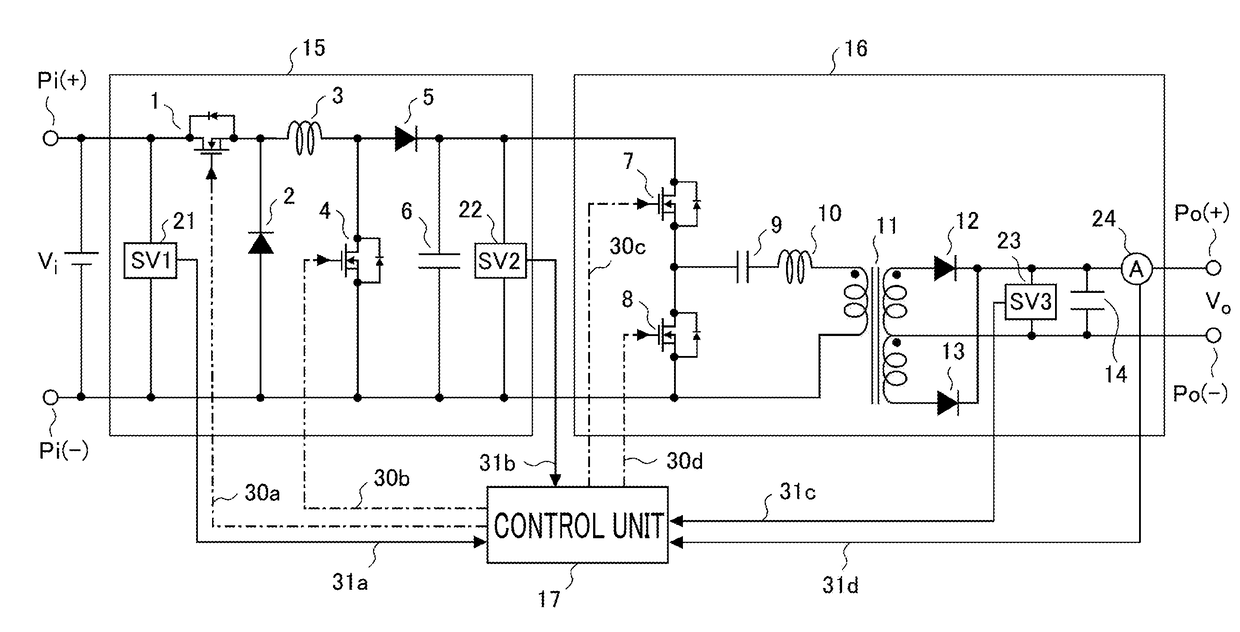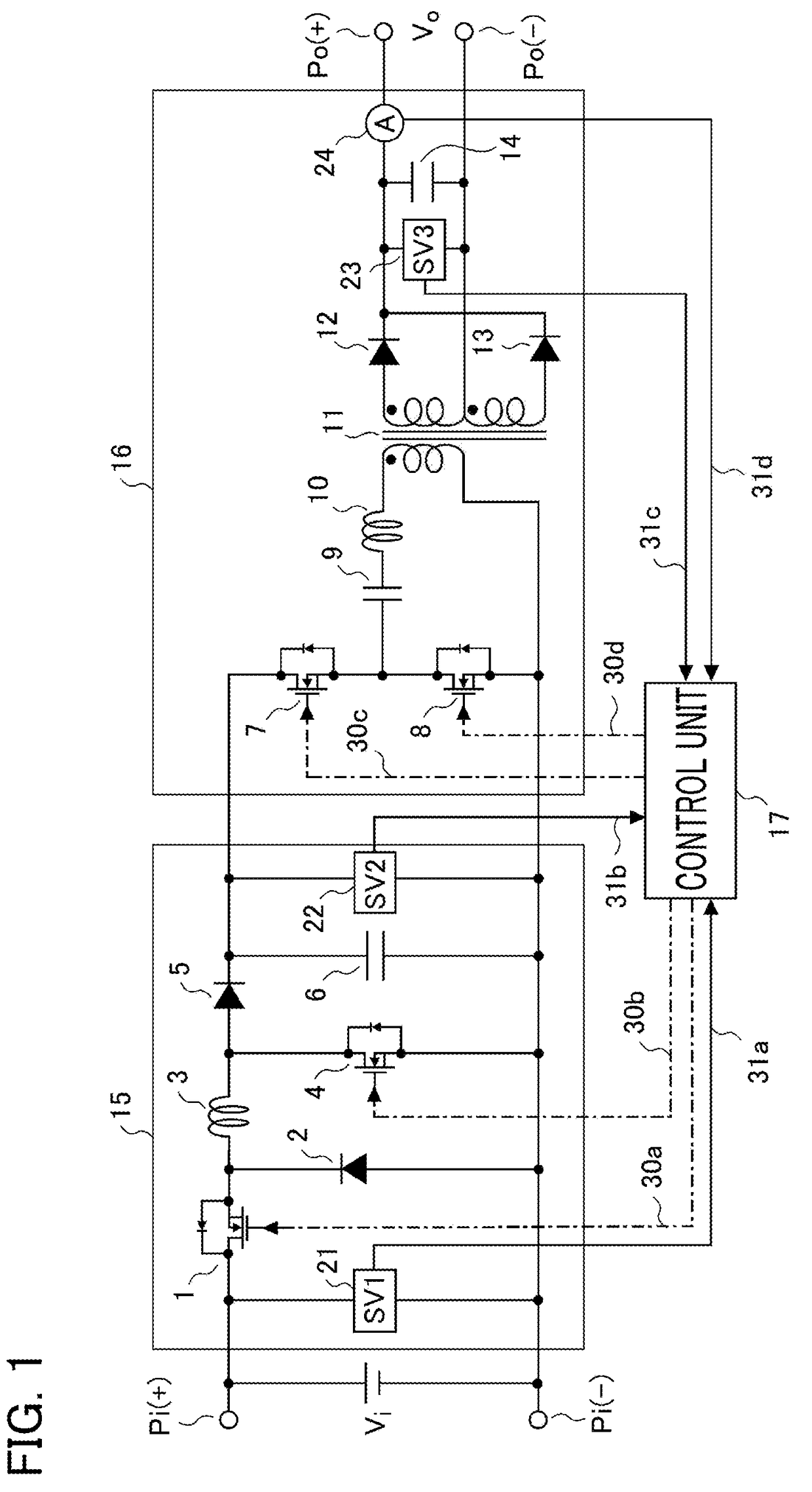Power converter
- Summary
- Abstract
- Description
- Claims
- Application Information
AI Technical Summary
Benefits of technology
Problems solved by technology
Method used
Image
Examples
embodiment 1
[0036]First, the explanation will be made referring to FIG. 1 through FIG. 9 for an electric power converter according to Embodiment 1 of the present invention. FIG. 1 is a schematic configuration diagram illustrating the electric power converter according to Embodiment 1; in FIG. 1, the electric power converter is a converter configured in a succession of two stages in which a non-isolated buck-boost converter circuit 15 is placed upstream of an isolated converter circuit 16 being an LLC (two inductors (LL) and a capacitor (C)) resonance converter. It is so arranged that an input voltage (DC voltage) Vi from input terminals Pi is stepped up or stepped down so as to be converted into an arbitrary DC voltage by means of the non-isolated buck-boost converter circuit 15; then, this DC voltage is inputted into the isolated converter circuit 16, and is thereby outputted at output terminals Po as an output voltage (DC voltage) Vo, which is supplied to a load not shown in the figure.
[0037]...
embodiment 2
[0098]Next, the explanation will be made referring to FIG. 10 through FIG. 15 for an electric power converter according to Embodiment 2 of the present invention. FIG. 10 is a schematic configuration diagram illustrating the electric power converter according to Embodiment 2; in FIG. 10, the electric power converter is a converter configured in a succession of two stages in which a polarity reversal type buck-boost converter circuit is provided as the non-isolated buck-boost converter circuit 15 upstream of the isolated converter circuit 16 that is a voltage resonance type converter.
[0099]It is so arranged that an input voltage Vi from input terminals Pi is stepped up or stepped down so as to be converted into an arbitrary DC voltage by means of the non-isolated buck-boost converter circuit 15 made of the polarity reversal type buck-boost converter circuit; then, this DC voltage is inputted into the isolated converter circuit 16, and is thereby outputted at output terminals Po as a D...
embodiment 3
[0152]Next, the explanation will be made referring to FIG. 16 for an electric power converter according to Embodiment 3 of the present invention. FIG. 16 is a schematic configuration diagram of the electric power converter according to Embodiment 3 of the present invention.
[0153]As illustrated in FIG. 16, the electric power converter is a converter configured in a succession of two stages in which the non-isolated buck-boost converter circuit 15 is placed upstream of the isolated converter circuit 16 being a half-bridge type converter. The non-isolated buck-boost converter circuit 15 is the same H-bridge type as that in Embodiment 1; however, the isolated converter circuit 16 is arranged to be of a half-bridge type in place of the full-bridge type of Embodiment 2.
[0154]An input voltage Vi from input terminals Pi is converted into an arbitrary DC voltage by means of the non-isolated buck-boost converter circuit 15, and an output voltage Vo is outputted by means of the isolated conver...
PUM
 Login to View More
Login to View More Abstract
Description
Claims
Application Information
 Login to View More
Login to View More - R&D
- Intellectual Property
- Life Sciences
- Materials
- Tech Scout
- Unparalleled Data Quality
- Higher Quality Content
- 60% Fewer Hallucinations
Browse by: Latest US Patents, China's latest patents, Technical Efficacy Thesaurus, Application Domain, Technology Topic, Popular Technical Reports.
© 2025 PatSnap. All rights reserved.Legal|Privacy policy|Modern Slavery Act Transparency Statement|Sitemap|About US| Contact US: help@patsnap.com



